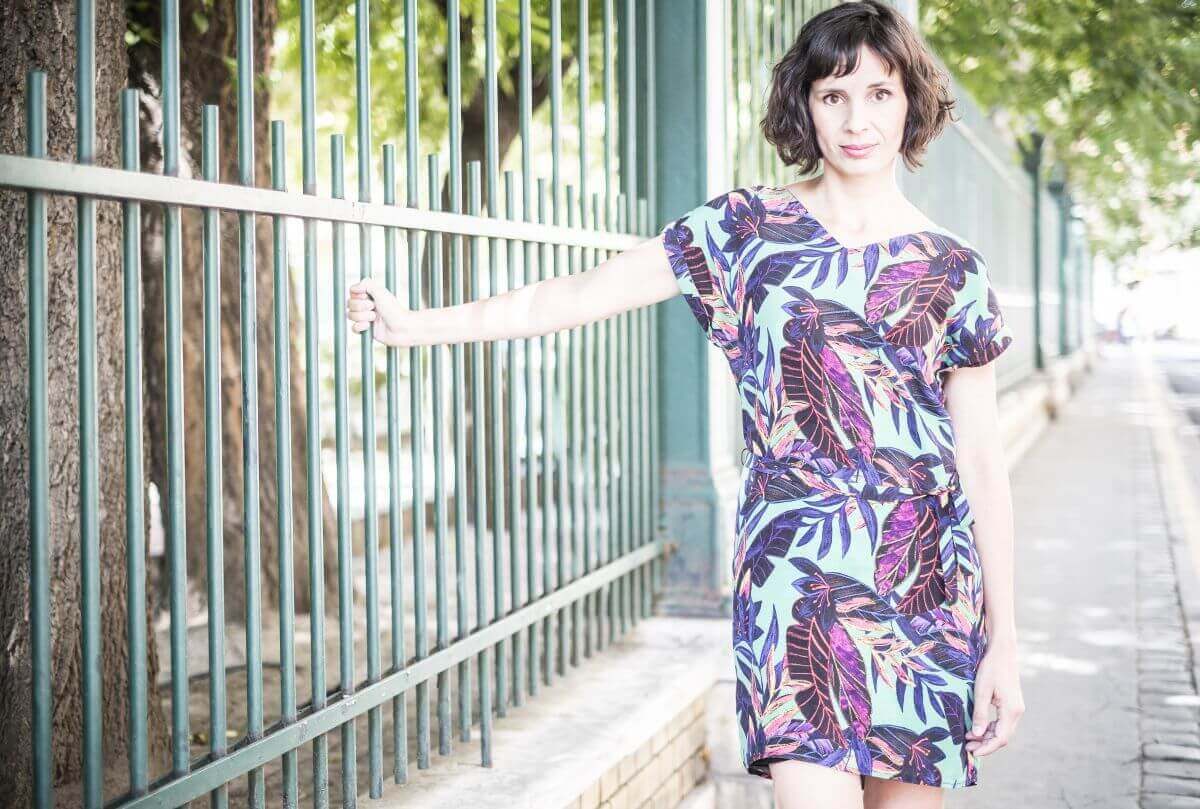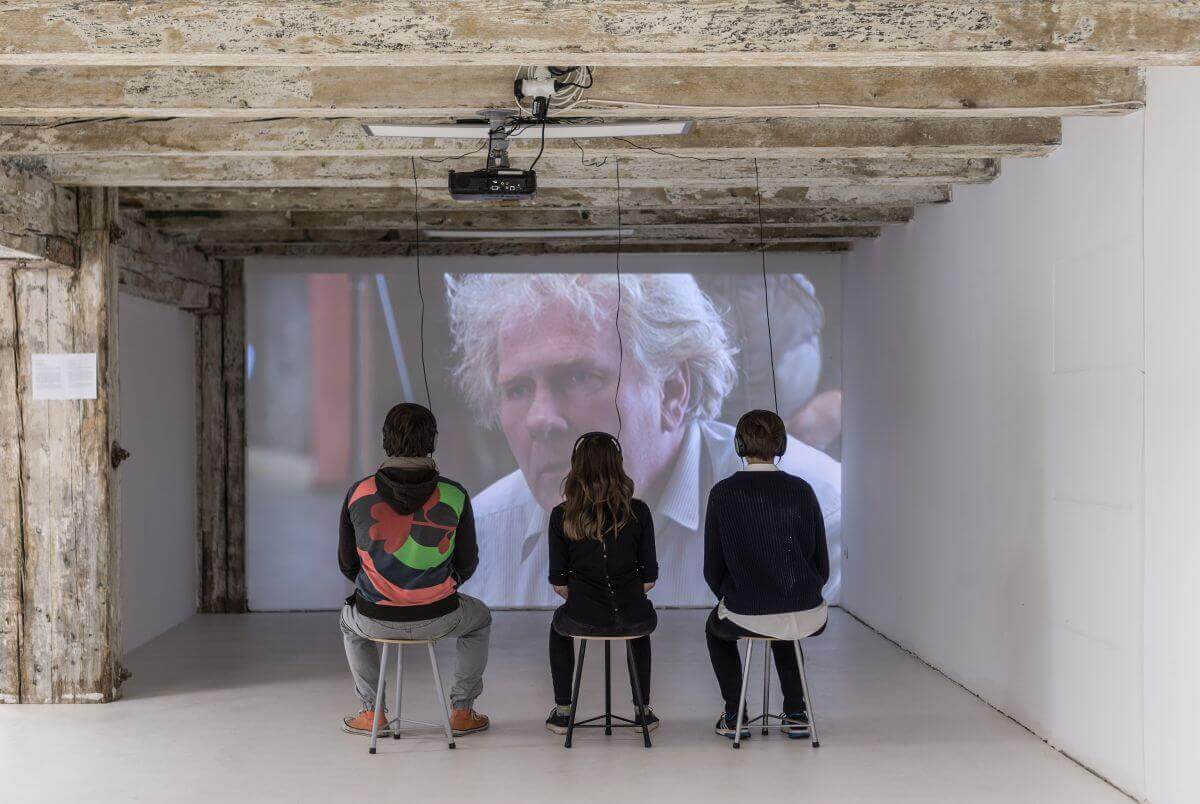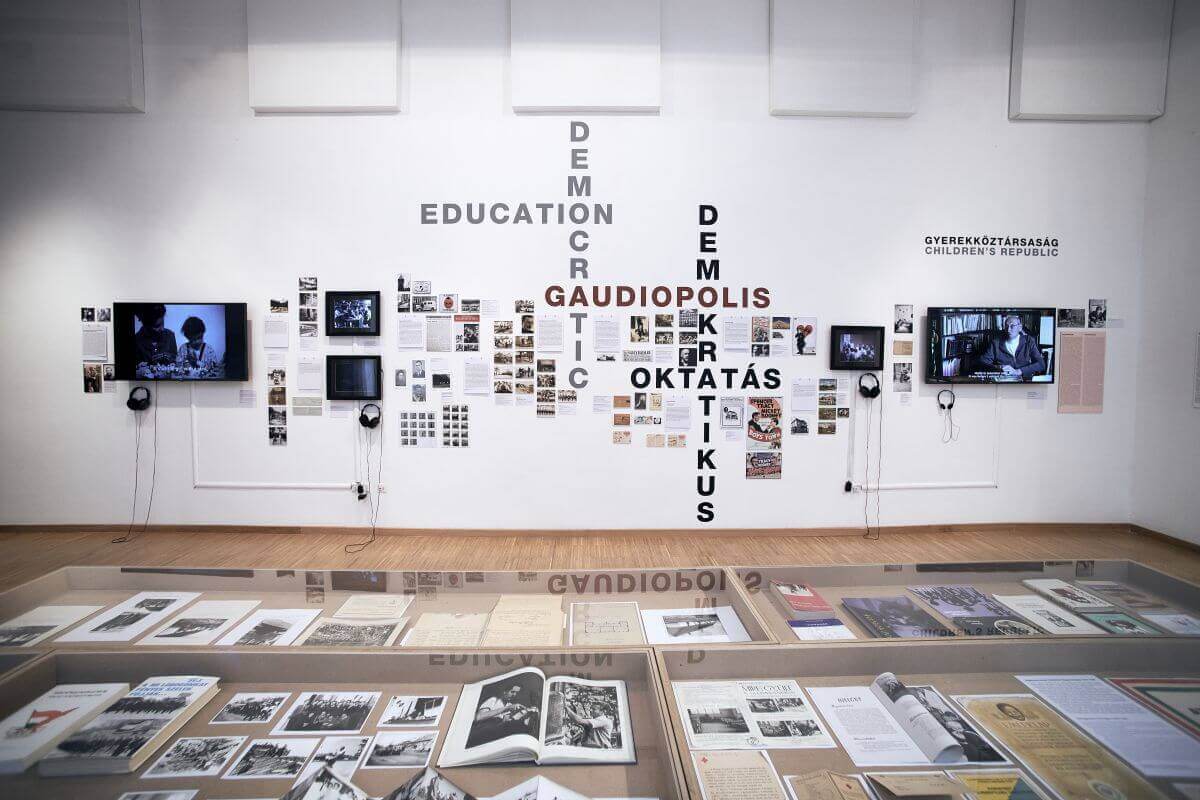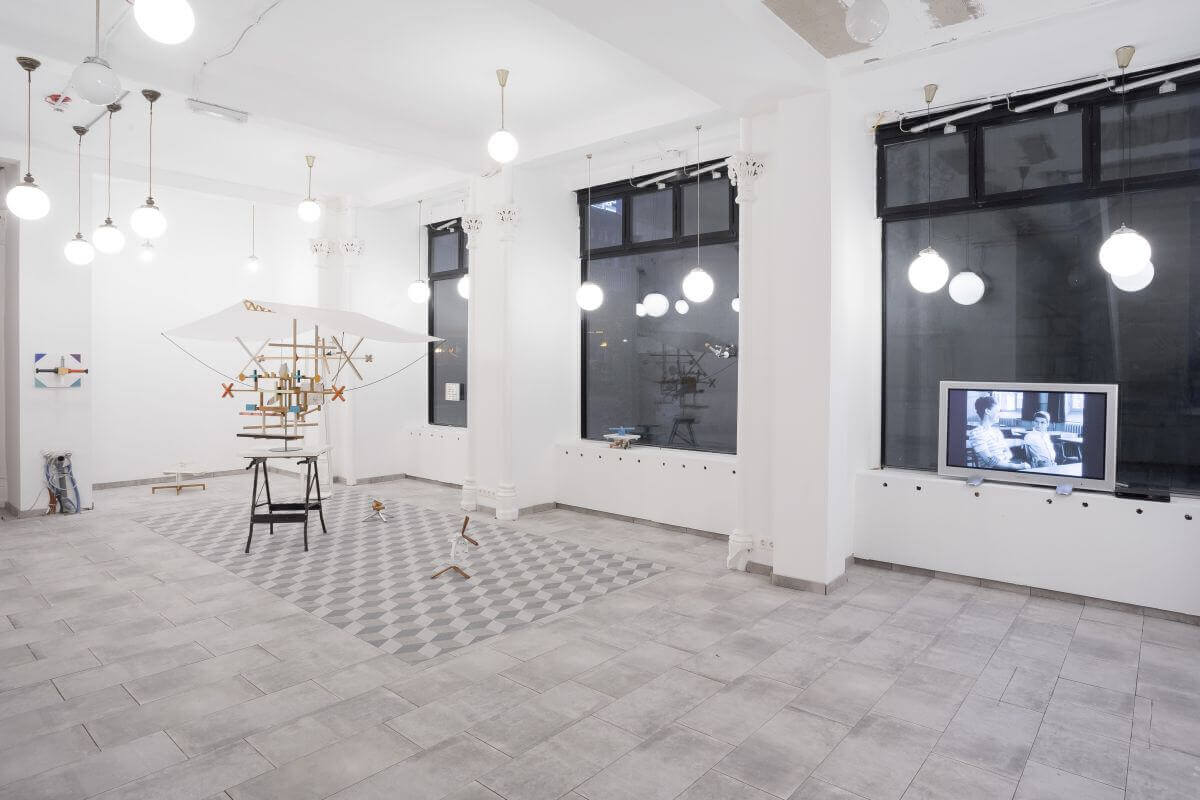OFF-Biennale, a grassroots, independent art initiative, is happening in Hungary for the second time. Based on self-organization and local and international collaboration, the biennale presents works of 120 artists without public funding and outside state-run art institutions. This edition’s main theme Gaudiopolis 2017 – the City of Joy, recalls the story of a Children’s Republic founded in the aftermath of World War II in Budapest by pastor Gábor Sztehlo, that gave shelter to hundreds of orphaned children and that was an educational/social experiment. I sat down with one of the founding organizers to discuss the event, its goals, and the future of art in Hungary.

For me, criticizing the situation was not enough anymore, I felt an urge to look around and see how can we work among these conditions.
Jakub Gawkowski: Before becoming the leader of OFF-Biennale, you were curator at the Ludwig Museum. Why did you stop working there?
Hajnalka Somogyi: I went on maternity leave in 2010. I still worked at the museum from the outside, and co-curated one more show with more than 50 volunteers on Yona Firedman’s work in 2011 – it was something like a preparation for what we are doing now. In early 2013, the director’s (Barnabás Bencsik) five-year contract was running out and, in that political climate, it was almost evident that he would not be able to regain the position although he re-applied. So I didn’t feel like re-attaching to an institution that was on the brink of changing profoundly, which happened eventually half year later.
When did you come up with the idea of OFF-Biennale?
After the government has started restructuring the cultural, artistic, and institutional system, the reaction of the art scene was mostly direct protest, for example a 9 days protest at the Ludwig Museum. The scene tried to pull its act together, but these actions did not raise public attention and therefore could not put pressure on the government to change its course. All the protests, had they been even much more inventive, much more creative, wouldn’t have led anywhere as this administration is not open to dialogue. Also, it was clear that public money was not being spent in any conceivable professional criteria. By the fall of 2013 protest energies were running out and we all were frustrated. For me, criticizing the situation was not enough anymore, I felt an urge to look around and see how can we work among these conditions.
Why have you decided on a biennale formula?
By that time the government announced a plan to organize a Budapest Biennale. It seemed like a very rootless, at best naive initiative, typical of how the government was moving forward in areas where it had no proper expertise at hand. Hence the somewhat angry idea that if there is a biennale in this country, then we – actors of the art scene – should do it; in other words: that we should steal the show. Of course, at the end Budapest Biennale never happened.
But the main motive was different. The proposal to organise a grassroots biennale, which is an umbrella for many art projects served the goal to shake up the scene and to strengthen its collaborative force. There were still many people, groups and small galleries working and putting a lot of energy into art projects but that just never became visible. I thought: if we coordinate all these efforts and just call it a biennale, it would be much easier to raise attention beyond the local art circles. My proposal also contained the idea that we would not use Hungarian public money and we would not work with public institutions.
Why didn’t you even try to get public funding?
The vulnerability of the art scene was in large part a result of being dependent on one source only. There was no significant alternative to the state for financing visual arts, even 23 years after the fall of state socialism. And in the long run, the scene would stand a better chance of establishing a dialogue, a partner-like relation with a future government, if this dependence lessens. Clearly, it was a political statement, too, because under this administration, the circumstances among which you can get public money are not acceptable, as I said, the criteria is often more political than professional.
Did people support you from the beginning?
Yes, first the idea met widespread enthusiasm. People wanted to become active. It was a way to turn the table and stop feeling alienated and totally victimized. But of course, this was not enough for a project to happen. I invited two colleagues Nikolett Erőss and Katalin Székely, they proposed further people and so, in early 2014, we had a curatorial team of seven people. (This team has changed a lot in the past 4 years but four of us are still on board: the above mentioned two colleagues, Bori Szalai and myself.) This initial curatorial group then had meetings with more than 100 people and groups to discuss the idea which, of course, was developing and changing a lot on the way.

When you decided not to apply for any state support, where did you get the funding from?
Beyond the obvious independence from the state, for us this means intellectual independence and that you are not pressured by anyone.
This decision put a pressure on us to find other resources. In case of the first edition, the majority of the money that we received did not come from art funds. It came from funds supporting civil society. The main source was the Norway Civil Grant, a significant fund distributed through independent Hungarian civil organizations—a policy the government strongly opposed and eventually attacked. Immediately we got on the black list – being “one of those Norwegian civils”. The scandal around the Norway Civil Grant was the first brutal step in the government’s agenda of stigmatizing civil action and international support. Another important programme that took us in was the Open Society Initiative for Europe (The Open Society Institute and other related institutions have been also aggressively attacked by the government). ERSTE Stiftung and private donors, mainly collectors, contributed significantly, too.
One of the realizations we had to make early on was that the bubble of the institutional system had burst around us. That we were one among many small NGOs, working for democratic values with our own means, competing for the same meagre resources, and, increasingly, withstanding the government’s anti-NGO campaign and its consequences. Applying for grants that are made to strengthen the civil society or democracy presents you with questions and criteria that concerns the true relevance of your project in these regards, well beyond the usual one-liners about art’s liberating power. At times this can be frustrating (when you are expected to measure success) but all in all, these processes and all the discussions they prompted have been very instructive.
Initiating such a project can be a way to activate one’s international network. At the start, we hoped for solidarity but much more, professional dialogue. We thought that even if state institutions dispose of all the funds and infrastructure, one obvious asset we still had was our professional network—colleagues and artists we have had worked with in the past, having established a relation of trust and respect. This proved to be a very important resource, too.
But all this would not have been enough without the immense amount of voluntary and pro bono work that was and has been put into OFF-Biennale from the first moment to today – even if we never calculated its value, it surely is the project’s largest resource, and not only financially.

The first edition was a statement, demonstration of energy and a way to activate the local scene. This year you organised the second biennale, you had to redefine it.
When we did the first one, we didn’t really plan to do the project in every two years. We rather considered it a single project that is called biennale for tactical reasons. But then, when the first OFF was over, instead of saying that we have done what we could, we felt a responsibility to continue. It was the joint effort of so many people, we just had to do something with that “momentum” that was there.
How has the initial idea changed from the first to the second edition?
The story of Gaudiopolis has inspired this year’s projects to address such issues as civil courage, taking responsibility, building communities, education, care and solidarity.
We didn’t change the initial idea that it is a grassroots umbrella project that gives opportunity to many people to show. In both editions, the rule has been that those who applied need to organise their projects on their own, we do not fundraise for, nor do we manage these projects. We do not want to become a super institution that takes over all the responsibility. What we do is developing the general structure of the project, conceiving its overarching theme, evaluating applications; then we do coordination, the communication of the project including the creation and maintenance of all the necessary platforms and materials, documentation, international networking – besides, the curatorial board also curate and organize projects. It is still a very complex task and a dominant role. At the start, when we set out to collaborate with many partakers of the local scene, we were all essentially in the same shoes so it was just fair to expect everyone to realize their own projects, while we take care of “everything else” that makes all these projects a coherent and visible biennale. However, the first two editions established the project to a point that now, it is somewhat easier to fundraise for it than it is for an individual art project. As this validation of the biennale is a common achievement of all the participants, this requirement of complete independence of the participating projects has to be reconsidered – right now we think that a network-like collaborative structure with a shared budget and shared responsibilities would make sense.
An important change is that two years ago, there were few new works produced in the frame of the biennale. People mostly showed what they had. In the long run however, one of the tasks OFF-Biennale has had to take on is to produce new works and to strengthen the art discourse – therefore, this edition presents much more new production and it has a thematic framework that the first edition lacked. We have a collaboration with the Galerie für Zeitgenössische Kunst in Leipzig, which is funded by the German Federal Cultural Fund, which also means that a lot of our projects are going to Leipzig afterwards. This means the artists have a perspective of continuation.
Besides the artists, are the rest of the people working on the exhibitions getting paid for their work?
The first edition was realized completely pro bono on the side of the curatorial board and many other key organizers, let alone the many volunteers whose contribution was essential. We could do that once and at that time, we also considered it a one-time action, but this is something that is absolutely not sustainable. I can’t say that we solved the problem but at least we managed to pay a little fee to most team members, at least those who put more time and expertise into the project than what is generally expected in a volunteering position. At the same time, we still have worked with a lot of great volunteers, most of them university students. One must point out that the fees we payed are for work that is done in the service of the entire project, thus for the benefit of all the participants, and not for organizing single programs. Also, all the artists who were invited by the curatorial board received a fee. As the participating projects have got their own budget, we don’t see if they could secure fees or not.
Ultimately, the HR difficulty with such a biennial project, for us at least, is that we cannot provide continuous salaries and the amount of work is, obviously, also very uneven. Therefore, people have to commit to other jobs. But then, how do you get them back when OFF needs them again? It is a very small scene that is getting even smaller due to immigration, and the jobs are even more scarce, people try to hold on to them.
What does the independence mean for OFF Biennale? One of your sponsors is a bank, the other is Polish Institute.
Beyond the obvious independence from the state, for us this means intellectual independence and that you are not pressured by anyone. The advantage of small-scale support coming from very many sources is that it does not provide grounds for the false belief that the sponsor could have influence on the project in return. As far as we can speak about independence at all (and I believe that in this sense, we can) having very different sources and partners is a good way of preserving it.
This edition has a main theme: Gaudiopolis 2017 – the City of Joy.
As I mentioned earlier, we believe that OFF-Biennale should be a catalyst of public discourse. There have been issues that we felt must be dealt with, due to their acute relevance not only in Hungary, but also in Europe and beyond. The story of Gaudiopolis has inspired this year’s projects to address such issues as civil courage, taking responsibility, building communities, education, care and solidarity, how all these relate to the crisis of a certain democratic ideal across the world, and what kids, play, and art have to do with all these values and problems.

The exhibitions also speak about the ways of teaching.
A recurring question in the program but also in Hungarian public discourse is how to educate children, how to think of them: are they to be partners or are they future material for power to manipulate. It is a really painful issue as in recent years, the public education system in Hungary has been demoralized and restructured according to a more autoritarian, segregative and conceptionally outdated model. Teachers’ autonomy has been diminished and their vulnerability increased, while the whole system is lacking resources. The curriculum has been rewritten and dictated centrally. The democratic model of Gaudiopolis and its concept on the real nature of education touches me personally, because my daughter has just started first grade in a public school.
The idea there was to raise kids by giving them power and trusting them. Letting them decide and learn from it. Art also had an important role. The best poets visited and worked with the children. The Gaudiopolis story also tells us that, even in difficult situations, creativity, play and the ability of being happy are values to preserve. In our current society that mentally is so dependent on its leadership and it propaganda of fear and alignment, playing freely and being glad is just about breaking out of the corner where you are confined to.
How do you see the future of biennale and your place in it?
The OFF-Biennale should remain an engine of independent action in art. I hope we can keep it up, but the structure and scale of working might of course change. It won’t change the election results next year, but I do think that it can change the way people think about it and about our common issues. That is the most we can expect the biennale to do, to pose questions and create situations that make people rethink what are the values that are worth standing for. As OFF has moved art out of the institutions into public space, storefronts, and everyday locations, as it addresses issues that people can relate to, and as it is clearly independent of political propaganda, it shall reach people who do not engage with contemporary art otherwise.
I couldn’t imagine working at any state institution in Hungary right now. Working with people on terms that we agreed on and that are satisfactory and worthy for all parties, all the friendships, trust and good conversations that make this project possible even despite the obvious tensions and difficulties, is something that made living here more bearable. The fact that we can pull such things together, it’s worth a long-term commitment.
**
![Political Critique [DISCONTINUED]](https://politicalcritique.org/wp-content/uploads/2015/09/Political-Critique-LOGO.png)
![Political Critique [DISCONTINUED]](https://politicalcritique.org/wp-content/uploads/2015/09/Political-Critique-LOGO-2.png)